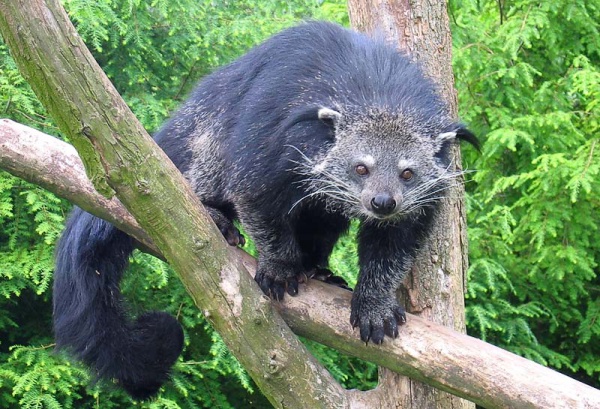Facts About Bear-cat, Binturong
The binturong, often referred to as the bearcat, is a captivating creature native to South and Southeast Asia. Regrettably, this species is listed as Vulnerable on the IUCN Red List due to a population decline exceeding 30% since the mid-1980s. First described in 1822 by Thomas Stamford Raffles, the binturong is the sole member of its genus, Arctictis.
Recognizable by their long, robust bodies covered in coarse black fur, binturongs possess prehensile tails aiding in their arboreal navigation. Interestingly, they have scent glands that emit an odor reminiscent of popcorn.
Inhabiting tall forests from India to the Philippines, these creatures are both diurnal and nocturnal, though they are most active during the twilight hours. Binturongs are omnivorous, consuming a diverse diet that includes small mammals, birds, fruits, and insects. They play a crucial ecological role by dispersing seeds, particularly those of strangler figs.
Binturongs achieve sexual maturity at around 2 to 3 years of age and can bear litters ranging from one to six offspring. However, their numbers are threatened by habitat destruction and degradation resulting from activities like logging and forest conversion.
Conservation efforts include various wildlife protection laws in countries such as India and Bangladesh. Initiatives like World Binturong Day aim to raise awareness about these remarkable animals. Additionally, many zoos house binturongs, helping to maintain genetic diversity and supporting broader conservation efforts.

 Myanmar (Burma)
Myanmar (Burma)